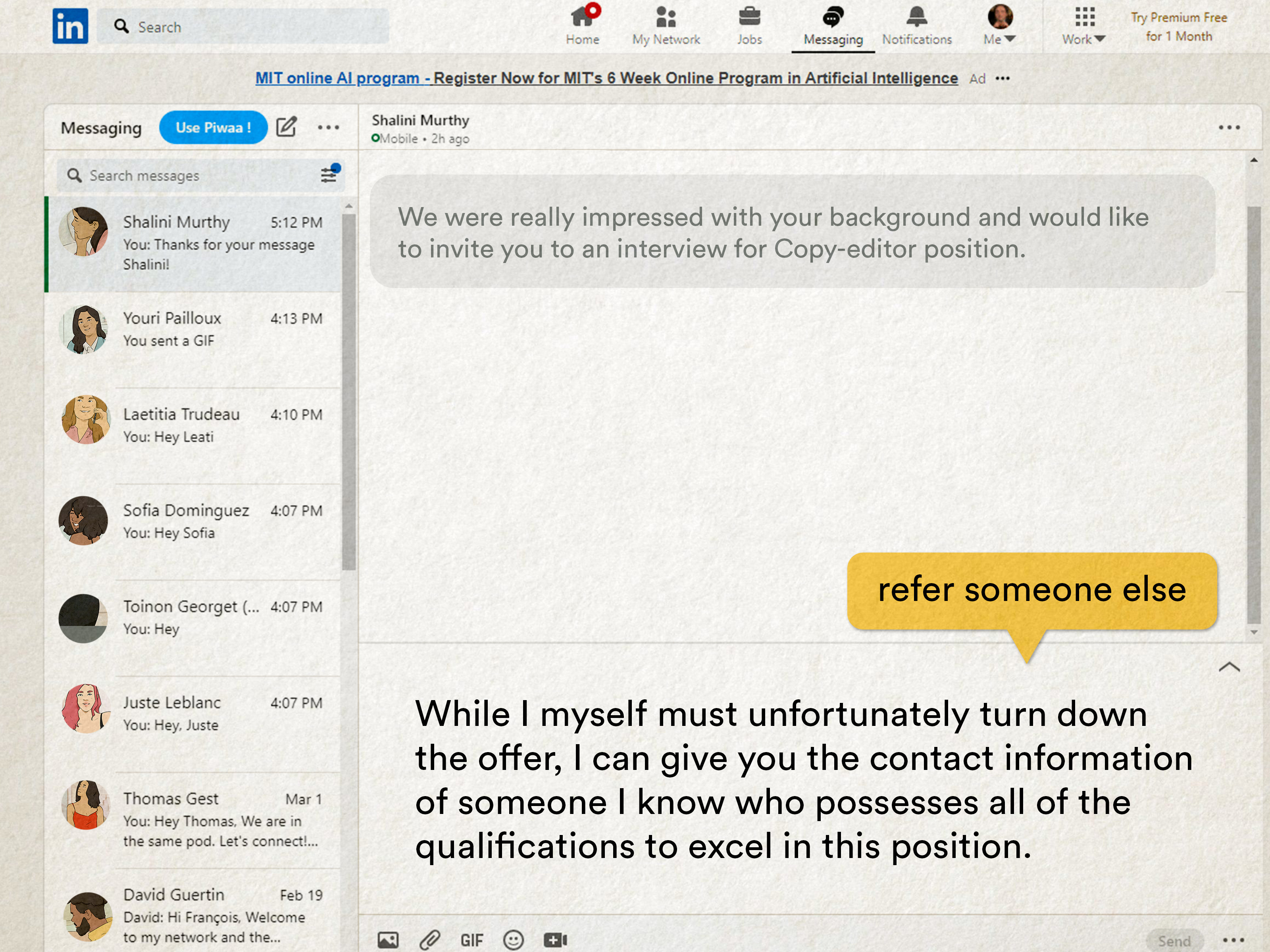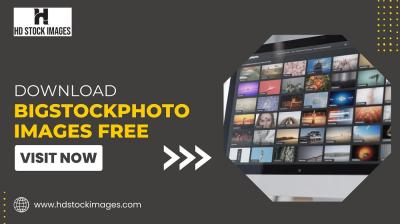So, you’ve just sent out that important job application on LinkedIn, and now you’re left in suspense, wondering what happens next. It’s a common scenario! Following up with a recruiter can feel daunting, but it’s a crucial step in the job hunt. A well-timed message not only shows your enthusiasm but also helps keep you on the recruiter's radar. Let’s dive into why this follow-up is so important and how to do it effectively!
Importance of Following Up on Job Applications

Following up on your job application isn’t just about checking the status; it offers several significant benefits. Here’s why it matters:
- Demonstrates Enthusiasm: A follow-up message reflects your genuine interest in the position. It shows that you’re proactive and passionate about the opportunity.
- Keeps You Top of Mind: Recruiters often juggle numerous candidates. Your follow-up can help you stand out in their memory, making it more likely they'll consider you when decisions are made.
- Clarifies Your Intent: Sometimes, applicants get lost in the shuffle. A simple follow-up can clarify your intent and reinforce your commitment to the role.
- Opens Communication: Following up can open the door for further dialogue. It gives you a chance to ask questions, learn more about the hiring timeline, or even receive feedback on your application.
- Shows Professionalism: A thoughtful follow-up exhibits professionalism and respect for the recruiter’s time. It highlights your communication skills and attention to detail.
Additionally, consider these aspects:
| Pros | Cons |
|---|---|
| Increases visibility | Risk of appearing pushy |
| Can lead to networking opportunities | May not receive a response |
| Demonstrates initiative | Time-sensitive; needs to be done appropriately |
In a competitive job market, following up can be the distinguishing factor that sets you apart from other candidates. Just remember to keep your tone friendly and professional, and you’ll be on the right track!
Also Read This: How to List Your LinkedIn Profile on Your Resume the Right Way
3. When to Reach Out to the Recruiter

Timing is everything, especially when it comes to following up on job applications. You want to strike the right balance between showing your enthusiasm and respecting the recruiter’s time. So, when is the best time to reach out?
*1. After the Application Deadline: If the job posting has a specific deadline, wait a few days past that date before reaching out. This gives the recruiter time to review applications. For instance, if the deadline was Friday, consider reaching out the following Tuesday or Wednesday.
2. A Week After Applying: If there’s no deadline, a good rule of thumb is to follow up about a week after submitting your application. This gives the recruiter enough time to process applications while still keeping your name fresh in their mind.
3. During a Major Hiring Season: If you know the company is ramping up for a busy hiring season (like right after graduation or during the new fiscal year), it’s perfectly acceptable to follow up sooner. Just keep in mind that they might be inundated with applications!
4. After Networking Events: If you’ve recently connected with the recruiter at a networking event, feel free to reach out shortly after. Mention the event in your message to jog their memory about your conversation.
By following these timing guidelines, you’ll maximize your chances of getting a positive response. Remember, persistence is key, but it’s crucial to maintain professionalism and respect the recruiter’s timeline.
Also Read This: How to Link Credly to LinkedIn and Showcase Your Certifications
4. Crafting Your Message: Key Elements to Include
Now that you know when to reach out, let's explore how to craft that perfect follow-up message. A well-structured note can make a lasting impression. Here are the key elements to include:
1. Start with a Friendly Greeting: Address the recruiter by their name, as it adds a personal touch. For example, “Hi [Recruiter’s Name],” is a great opener.
2. Introduce Yourself: Remind them who you are. Mention the position you applied for and when you submitted your application. For instance: “I recently applied for the Marketing Coordinator position on [date].”
3. Express Enthusiasm: Show your excitement for the role. A simple line like “I’m very enthusiastic about the opportunity to join [Company Name]” can go a long way in conveying your passion.
4. Ask About the Status of Your Application: Politely inquire about the status of your application. You might say, “I wanted to see if there have been any updates regarding my application or the hiring timeline.”
5. Offer to Provide Additional Information: Let them know you’re willing to answer any questions or provide further information. For example, “If you need any more information from my side, please let me know!”
6. Close with Gratitude*: Always thank them for their time. A simple closing like, “Thank you for your consideration, and I look forward to hearing from you soon,” conveys professionalism and appreciation.
Example Message:
Hi [Recruiter’s Name], I hope you’re doing well! I recently applied for the Marketing Coordinator position on [date] and wanted to express my enthusiasm for the opportunity to join [Company Name]. I wanted to see if there have been any updates regarding my application or the hiring timeline. If you need any more information from my side, please let me know! Thank you for your consideration, and I look forward to hearing from you soon! Best, [Your Name]
By incorporating these elements, your follow-up message will not only be professional but also engaging, increasing your chances of making a positive impression on the recruiter.
Also Read This: Adding Links to Your LinkedIn Posts: Tips for Easy Navigation
5. Example Messages for Various Scenarios
Following up with a recruiter on LinkedIn can feel daunting, but having a few template messages can make the process smoother. Here are some example messages tailored for various scenarios:
1. After Submitting Your Application:
“Hi [Recruiter’s Name],
I hope this message finds you well! I recently applied for the [Job Title] position at [Company Name] and wanted to express my enthusiasm for the opportunity. I believe my skills in [mention relevant skills] would make me a great fit for the team. If you have any updates on my application status, I would love to hear from you. Thank you for your time!”
2. After a Job Interview:
“Hi [Recruiter’s Name],
Thank you so much for the opportunity to interview for the [Job Title] position. I enjoyed our conversation and learning more about the exciting work at [Company Name]. I am very interested in the role and believe I could contribute positively to the team. If there are any updates regarding my application, please let me know. Looking forward to hearing from you!”
3. If You Haven’t Heard Back:
“Hi [Recruiter’s Name],
I hope you’re doing well! I wanted to check in regarding my application for the [Job Title] position I submitted on [date]. I’m very enthusiastic about the opportunity to join [Company Name] and wanted to see if there have been any updates. Thank you for your assistance!”
4. Networking Without a Specific Job:
“Hi [Recruiter’s Name],
I hope this message finds you well! I came across your profile while researching [Company Name]. I’m currently exploring new opportunities in [Your Industry/Field] and would love to connect to learn more about the company culture and any potential roles that might suit my background in [mention relevant experience]. Thank you!”
Feel free to customize these messages based on your personality and the context of your application. The more authentic you sound, the better your chances of getting a response!
6. Best Practices for LinkedIn Communication
Communicating effectively on LinkedIn can make a significant difference in how recruiters perceive you. Here are some best practices to keep in mind:
- Be concise: Recruiters are busy, so keep your messages brief and to the point. Aim for a few sentences that highlight your purpose without overwhelming them with details.
- Personalize your messages: Always address the recruiter by their name and mention the specific job title or department. This shows that you’ve done your homework and are genuinely interested.
- Stay professional: Use a friendly yet professional tone. Avoid slang and overly casual language, even if you’re feeling familiar. Remember, this is a business communication!
- Be patient: After sending your message, give the recruiter some time to respond. If you don’t hear back within a week or two, it’s okay to send a polite follow-up.
- Engage with their content: One way to stay on a recruiter’s radar is to like or comment on their posts. This shows your interest in their work and can keep you fresh in their mind.
By following these best practices, you’ll be better equipped to make a positive impression and enhance your chances of moving forward in the hiring process. Happy networking!
 admin
admin








